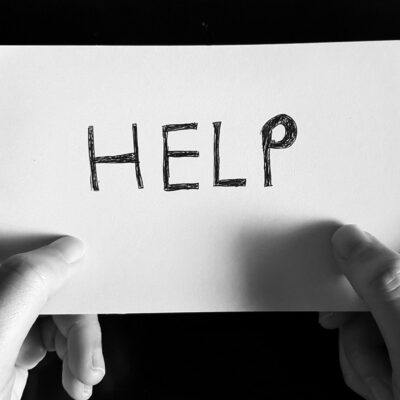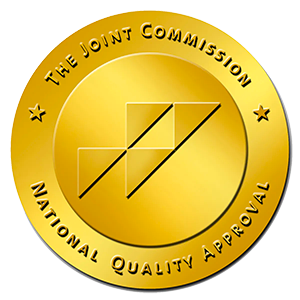By Mandy Parsons
According to the Centers for Disease Control and Prevention (CDC), more than 48,000 people died by suicide in 2021. The number of people who contemplated committing suicide was significantly higher, at approximately 12.3 million American adults.
Why have suicide rates increased nearly 36% from 2000-2021? A study published by the National Library of Medicine reported several factors including a rise in mood and alcohol use disorders.
Additional circumstances that affect your risk of suicide range from chronic pain and financial problems to social isolation and lack of mental healthcare access. And in many instances, there are warning signs that someone may be suicidal.
But what about when there are no apparent red flags? What happens when a loved one who seems happy takes their own life? Can you be happy but suicidal?
Those battling suicidal thoughts may exhibit some unexpected behaviors as well, such as cheerfulness or a carefree attitude. But why do happy people commit suicide?
Signs of Suicidal Ideation
 Just like there is no single cause of suicide, there is also no single sign that someone is suicidal. Regardless, it is important to recognize the symptoms of suicidal ideation.
Just like there is no single cause of suicide, there is also no single sign that someone is suicidal. Regardless, it is important to recognize the symptoms of suicidal ideation.
It is not unusual for someone who is thinking about ending their life to struggle with depression or exhibit long-lasting sadness. They may express feelings of emptiness, loneliness, hopelessness, or anger. For those with existing mental health conditions, mood changes can exacerbate suicidal thoughts or attempts.
Suicidal behavior often looks like engaging in self-harm, talking about plans to kill yourself, or discussing what life would be like without you. Someone who is suicidal may also start to give away their belongings or say goodbye to family and friends.
However, there are some surprising behaviors associated with risk of suicide as well. Have you ever wondered, Why do the happiest people commit suicide?
Happy but Suicidal?
It is not abnormal for someone considering suicide to act unusually upbeat or optimistic. Why is this the case?
Oftentimes, those who attempt suicide do so once the initial pain or crisis has subsided, and a feeling of relief has come over them.
VeryWellMind.com says it’s common to believe suicide is motivated solely by negative feelings. However, oftentimes those who attempt suicide do so once the initial pain or crisis has subsided, and a feeling of relief has come over them. That’s why some suicidal people seem happiest before suicide.
Relief, suggests HuffPost, may come in the form of having finally made a decision to die by suicide. They no longer have to endure the constant inner dialogue and may find comfort in knowing that their physical, emotional, or mental pain is ending.
Alternatively, they may be keeping up appearances to avoid tipping off those closest to them. But what if they actually are having a better day? How can you tell the difference between a good day, mania, and true suicidal ideation?
HuffPost suggests looking at the context. Is the change in attitude or behavior sudden, and does it increase without explanation? If so, it may be worth digging deeper into why the change came about and whether that individual is contemplating suicide.
Also, mania typically presents with additional symptoms like talkativeness, grandiose thinking, increased activity, and decreased need for sleep. Nevertheless, any time you detect changes in someone’s mood or behavior, it is best to ask questions.
How You Can Help
If you suspect that a friend or loved one is struggling with suicidal thoughts, do not hesitate to reach out to them. Express your concern, and set a time to connect one-on-one. Relational support is key.
Consider the following approaches:
- Offer to Listen and Be Respectful
Allow them a chance to talk without interruption, and refrain from judgment or accusations. Remember that you can be sympathetic without supporting someone’s ideas.
- Ask Questions
Try to gauge their mental and emotional state by asking direct questions. Do not shy away from uncomfortable topics like finances, relationships, depression, or self-harm.
- Encourage Them to Seek Help
Suggest they seek help via group therapy, the 988 suicide support hotline, or by meeting with a mental health professional. If you sense the person is an imminent danger to themself, do not leave them alone. Get them to a hospital or contact emergency services.
- Show Your Support
Offer to help them research treatment options, make phone calls, schedule appointments, or assist them with transportation. Be available if they need to talk, and remind them that things can get better.
There Is Hope
At Bournewood Health Systems, we understand the pain of suicide. We believe that suicide deaths for at-risk patients in health and behavioral health systems are preventable. That’s why our caring clinicians are trained and supported in suicide awareness, prevention, treatment, and aftercare.
And with our Zero Suicide™ framework, we are rising to the challenge. You do not have to navigate your journey alone. Learn more today about our programs and how they are helping to bring hope to the hopeless.


